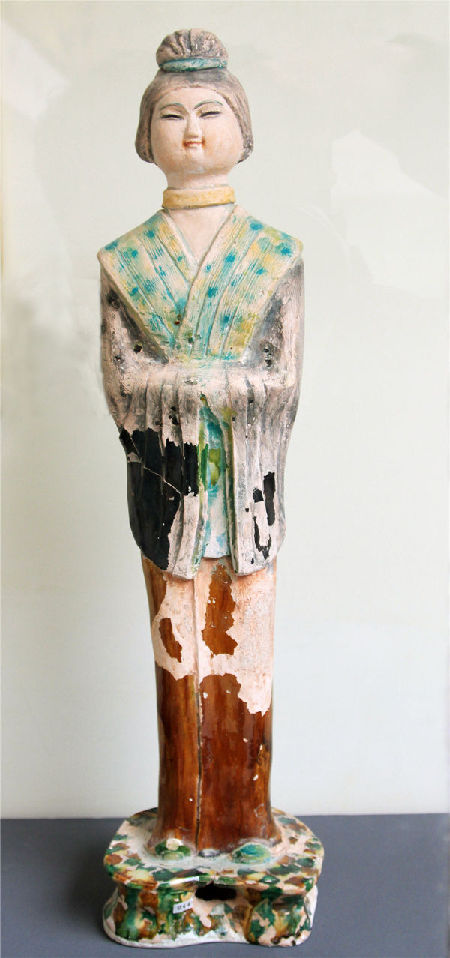Silk Road relics under threat
 0 Comment(s)
0 Comment(s) Print
Print E-mail China Daily, June 20, 2014
E-mail China Daily, June 20, 2014
| A Tang Dynasty (AD 618-907) porcelain figurine unearthed in the Suoyang City ruins. [Photo/China Daily] |
Chinese officials and conservators are taking all kinds of measures to resurrect the route's former glory, in a joint initiative with Kazakhstan and Kyrgyzstan to seek UNESCO's World Heritage status for the Silk Road. The result is going to be announced later this week.
Not only have the relics been preserved, but the site has also been revamped to be more tourist-friendly. China has also launched ambitious efforts to turn the desert into an oasis that will better nurture the relics.
"The change is vast," says Cai Chao, executive director of the Gansu section of the Silk Road and architect at the Institute of Architectural History, a major planner for the project. "This area has always been a hot spot for experts and archaeologists. Now it has also become a place for ordinary people to look back at history."
The work started from within. In the Yumen Pass, a frontier pass leading to the north from the ancient Chinese territory, the missing parts are mended with adobe made from original material and ramming craftsmanship.
The surface of the relics is sprayed with anti-weathering material developed by the Conservation Institute of Dunhuang Academy, which has been responsible for the conservation of major sites on the Silk Road, while the cracks are filled with grouting materials.
A total of 5 million yuan ($803,000) has been invested in the monitoring system that records the temperature and humidity of the relics.







Go to Forum >>0 Comment(s)